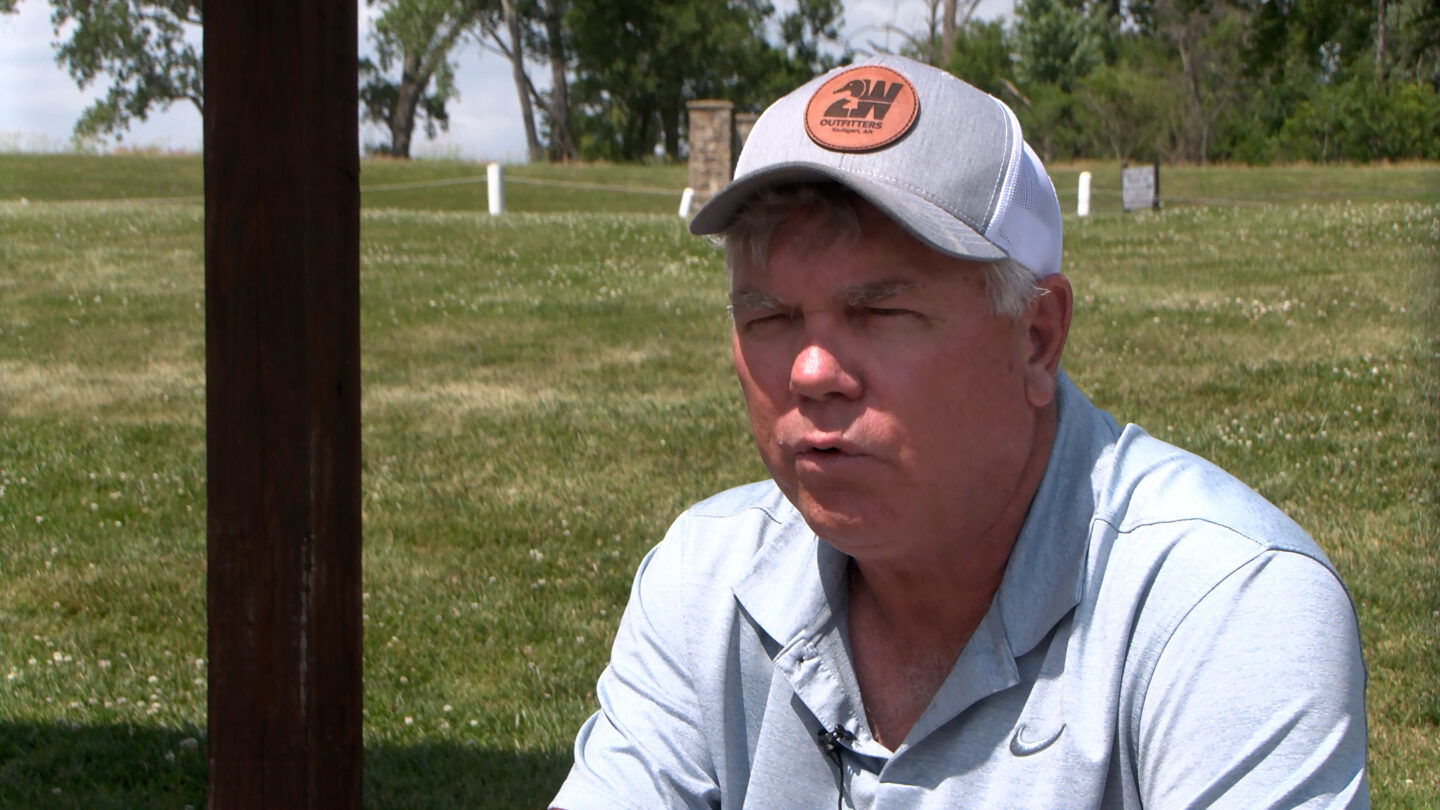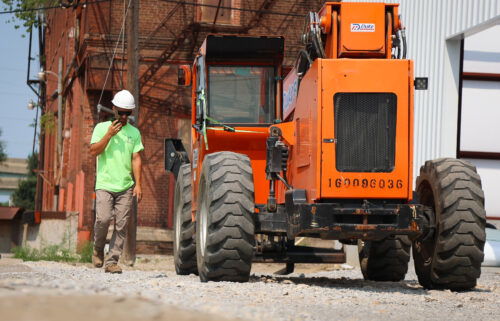Local dredging expert explains the work Lake Contrary could need

By Chris Fortune
Buchanan County will need to bring in some heavy machinery if they hope to move forward with restoring a community asset.
Scott Critchfield owns Critchfield Crane and dredges ponds and small lakes in the Kansas City area. Critchfield’s father introduced him to the profession as a teenager, and he has dredged for over 40 years.
“One time he said, ‘Do you want to learn how to dredge?’ and I said, ‘Yeah,’” Critchfield said. “So I got on the crane, and I started dredging when I was probably 17 years old.”
Lake Contrary was dredged in 1956, but only along the shoreline where the lake begins to curve west, according to News-Press reporting at the time. It was significantly smaller than the potential dredging project that Buchanan County is currently exploring.
There are generally three types of dredging that tackle projects of different sizes to remove sediment from a body of water. The first type involves projects, such as farm ponds. Water is drained out, allowing the silt to dry, and then bulldozers push the silt out.
Critchfield uses a second type where the dredging is done from a shoreline, and silt is dug out and placed in the back of a truck.
“I go in with a dragline or long-reach excavator, and we take out the silt that way, but nothing on this (Lake Contrary) scale or magnitude,” he said.
The third option is a hydraulic dredge, which is out of Critchfield’s area of expertise, but he said it would probably be the best option for Lake Contrary because of its size of 300 acres.
With hydraulic dredging, a barge sits in the lake and a cutter head extends and turns at the bottom of the body of water to suction sediment.
“When you’re doing it 500 feet out in the middle of a lake, it’s hard to get out to it with a dragline or anything else,” he said. “So the hydraulic dredge would be the way to do it,” he said.
Many residents in St. Joseph, especially those who live near the lake, support the project to dredge Lake Contrary. They have watched over the years as the water became shallower.
A representative with the Missouri Department of Natural Resources said it is part of an oxbow lake’s life cycle to go through sedimentation.
“All ponds and lakes have nonmoving water, and so the sediment tends to drop out of suspension and collect in the bottom of the lake,” Surface Water Section Chief Michael Weller said.
Weller compared dredging to a glass filled halfway with sand and the rest filled with water. The glass can always be filled to the brim with water, but if sand is removed, the volume of water will increase.
“Dredging is not necessarily going to have an effect on water levels, but what it could have an effect on is water depths,” Weller said.
If the dredging project were to proceed, the 300-acre lake would be dredged in three sections over three seasons. The project could carry an estimated $7 million to $9 million price tag.
Contractors typically decide on a price by calculating how many cubic yards will be dredged.
“Well, if you can imagine moving 8 or 10 feet across that whole 300 acres, that’s just a huge amount of volume of dirt that has to be moved, and that’s why it’s so expensive,” he said.
Buchanan County is contemplating buying a dredge and hiring operators to run it, but in a text, commissioner Ron Hook said they are only in the research stage of deciding how they would attempt to dredge Lake Contrary.



